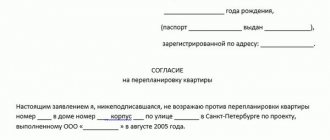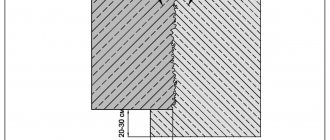The managing partner at the Zagorodny Stil real estate agency, Petr Manko, answers:
Ignorance of the laws does not relieve one from responsibility for their failure to comply.
Unfortunately, your situation is quite common, and there are not many ways out of it. In my opinion, the only way that will allow you to sleep peacefully and use this property in the future is to redistribute land plots with your neighbor. Simply put, buy part of his plot from him for money in order to ensure compliance with urban planning regulations. Your task is to ensure a distance of three meters from your neighbor’s border to your house. Such an event will require certain costs, and the price of purchasing these several tens of square meters. m will be rather large, but I would not consider other options. Do I have to get permission to add an extension to my house?
Is it possible to register a guest house on individual housing construction?
Violation of construction rules and regulations
Violation of construction rules is an administrative offense. The issues of regulating emerging liability, establishing its limits and forms are dealt with in Chapter 9 of the Code of Administrative Offenses (CAO RF), Art. 9.4, 9.5, 9.5.1. The list is exhaustive. The form and limits of responsibility are established by the supervisory authority.
The following violations in the field of construction fall under administrative liability:
- any violations of project documentation, requirements of technical regulations and standards, and other legal acts. Art. 9.5 establishes liability for violation of construction standards committed directly during construction, major repairs, reconstruction. Moreover, if violations of norms and rules affect the safety of the structure of a building, structure undergoing repair or reconstruction, then more stringent fines and longer periods of administrative suspension of work are established;
- lack of permission to carry out construction, major repairs or reconstruction, if the requirements of the rules and regulations require such permission;
- violation of the deadlines for sending notices to executive authorities authorized in the field of supervision in the field of construction;
- cases where government supervisory authorities in the construction sector identified violations or violations of construction standards, after which construction, reconstruction or major repair activities were not suspended or were resumed until receipt of an act on the elimination of previously identified violations;
- cases where the commissioning of a building was carried out in the absence of conclusions from authorized supervisory authorities in the field of construction on the condition of the building, structure, as well as the operation of such an object, when required by construction norms and regulations in the implementation of such supervision;
- carrying out any work on the preparation of design documentation, engineering surveys without a certificate of admission to carry out such work, provided that obtaining it (the permission) is mandatory;
- carrying out work that affects the safety of the facility without a certificate of access to it.
Legal assistance on violations in construction
Consultation in the office and by phone
+7(495) 728-99-14
Help from a lawyer. 18 years of experience in construction violations!
We are working during the quarantine period of 2021! Call.
Violations in construction are punishable by fines (the amount of which differs depending on the category of the person who committed the administrative offense: physical, legal, official, individual entrepreneur) and administrative suspension of work for up to 90 days. Not all violations in the field of construction require such a form of punishment as suspension of activities; for example, violation of deadlines for sending notices cannot be punished by suspension of activities, because by default it has not yet started.
An allegedly identified violation of construction standards does not always take place in reality. And the interested person has the right to defend his innocence in court. Considering the large fines (up to 300 thousand rubles for legal entities), the justification that a violation in construction did not exist, or was not as serious as it is represented, is a sure way to significant savings in money.
An administrative lawyer can represent your interests in administrative disputes.
In law.
In cases of violations in construction, you have the right to compensation for financial expenses and legal costs, as well as compensation for moral damages, recovering them in court.
Snip during construction on private housing construction land
To place utility buildings, the correct choice of landmarks is necessary. These could be buildings on neighbors' properties, fences or other limited objects.
Location of buildings The cottage should be located no closer than 5 m from the road and 3 m from dead-end yards or streets with little traffic. In urban planning, the red line refers to the boundary that separates the roadway of the street from the individual housing construction site.
It is advisable to locate outbuildings in the depths of the site, away from the street. The distance from the fence to the wall of a residential building should be 1-1.5 m. The distance between buildings should not be less than 4 m. This distance is general.
Norms and regulations of SNPs and GOSTs for the construction of a private house
- living room area – 12, bedroom – 8 m2;
- for other premises the following construction area is determined: kitchen - 6, bath - 1.8, toilet - 0.96, hallway - 1.8 m2.
- width of stairs, corridors – 0.9 m2;
- ceiling height in a residential building is 2.5, ground floor, basement – 2 m.
Construction standards regulate the process of connecting to communications. Residential buildings are recognized as suitable for habitation if they are connected to utilities. They can be centralized or autonomous. Electricity supply to the private sector is carried out mainly by overhead power lines.
SNP for individual housing construction in 2021
Thus, the construction of new premises should not affect the interests of other persons living in the neighborhood. There are two ways to build an extension to a private house - independently and officially.
When construction is carried out legally, it begins with the collection of permits. Moreover, any complex construction and repair work, which results in the reconstruction of the house or a change in its total area, is coordinated with the regulatory authorities. Another, more popular method is unauthorized construction. That is, first the owner of the house builds additional premises and only then tries to legitimize them. It is possible to register an unauthorized building, although this will require a little more effort and time. But the possibility of a ban on registration must also be taken into account. For example, it turns out that unauthorized construction violates construction or other important standards. Important! Before applying, it is advisable to have a completely finished project. It is highly desirable that it be compiled by specialists. This way, all the important nuances of construction will be taken into account, since the slightest inaccuracy can cause failure. Where to contact Once all the necessary documents have been collected and the project is ready, you should contact the housing department of the city administration. The application is submitted to the architectural department of the municipality.
Read more: What documents are needed for divorce
The appeal is considered within about a month. After this, the applicant receives a written response with the final verdict.
How to arrange an extension to a private house in a rural area? In this case, you must contact your local authorities. You can find out the name of the authorized bodies in the village administration.
Disputes over poor quality construction
In most cases, proving that a house was built poorly is very difficult; pre-trial resolution of such conflicts in practice is extremely rare, and even in court the defendant will delay admitting that mistakes were made until the last minute.
Usually in such a situation one cannot do without a construction examination, which should only be carried out by authorized organizations. It is important to know that an expert opinion or a conclusion on examining the technical condition of the house (a cheaper option) can be obtained even in the absence of project documentation. Here it is very important to carry out an examination by a good expert with correctly selected techniques, so that in the future this examination will stand up in court.
Legal assistance in a dispute with a construction contractor
Disputes about construction defects usually end up in court, and it is extremely difficult for the plaintiff to win such a case on his own. Only an experienced lawyer who specializes in this area of law and knows the nuances of the law can effectively counter the defendant’s line of defense.
In particular, liability remains with the contractor even if the customer:
- decided to carry out construction without geological surveys and design documents;
- gave a receipt to the contractor that he would take upon himself all the problems associated with the lack of geological data and the project.
If you are faced with a problem such as poor-quality construction of a bathhouse or house, our specialists are ready to provide you with professional legal support at all stages of the confrontation with the contractor. We have extensive legal experience and positive practice in this industry. Contact us to protect your rights right now:
What standards regulate the issue?
The primary consideration of fundamental rules does not mean that there are no other official guidelines and restrictions. The realities of modern existence provide for the need to fulfill the points specified in other documents, taking into account the risks from sources of comfort, lighting or heat.
Fire regulations requiring safe distances eliminate the possibility of fire from potential hazard sources. The presence of the necessary setback from power lines, above-ground and underground, and gas pipelines not only helps to avoid their damage when digging a trench during construction.
This is also concern for the life and health of people who will live or work in the constructed building. When building a residential building, the developer needs to take into account the following regulatory documents:
- SNiP - developed back in Soviet times, and subsequently repeatedly edited and supplemented to bring them into line with modern legislative realities;
- SanPiN – epidemiological and sanitary safety standards, derived through scientific research and ensuring the absence of environmental contamination and the safety of people from possible infection;
- fire-fighting distances regulated by Federal Law No. 123 are measures aimed at preventing fires in buildings from potentially dangerous objects. The Federal Law specifies at what distance the construction of residential buildings and household structures is allowed;
- The Town Planning Code specifies the necessary distancing of real estate from public buildings, garages, educational and medical institutions, maximum distances from the road;
- PZZ – rules of land use and development;
- The Code of Administrative Offenses provides for a whole system of sanctions: fines and penalties for violating regulations in documents equivalent to legislation.
Supervisory authorities help to avoid common mistakes in construction in urban and rural areas.
They are the ones who determine what the required distances should be based on existing laws, checking the plans of developers, making adjustments if errors are made in the design. They also approve standards for how different types of buildings should be placed.
Building regulations
SNiP is a common name for all regulatory documents developed over many years of standard construction and state standardization. This is a legislative standard, according to which it is necessary to determine the necessary distance from each other of buildings for domestic purposes and residential premises, the distance to buildings from the boundaries of the site, the variable sizes of indents when developing an SNT plot, when located from the street, a neighbor’s land plot or government buildings.
The basic construction rules (SB), with the help of which the development of territories is carried out, are considered:
- SP 13330.2011 – “Planning and development of territories of gardening associations...”. They regulate the distance when building on small standard plots, where it is sometimes impossible to strictly comply with the requirements of other standards due to the small size and close proximity of summer cottages. In 2017, changes were made to them, which came into force from the beginning of 2018.
- The minimum removal in private land ownership is regulated by SNiP 30-02-97 (its updated version), in the preparation of which other standards were also taken into account. The official name is SP 53.13330.2011. When trying to find two documents, there is only one version that takes into account the features of developing the territories of horticultural non-profit associations. You should only focus on the updated version with changes for 2021.
- The rules for the construction of a private house are SNiP 2.08.01-89, according to which residential premises are built, and SNiP 31-02-2001, which regulates individual housing construction - single-apartment houses. They now need to be taken into account during construction in SNT: starting from 2021, it is allowed to build housing in former dacha cooperatives and partnerships. Unlike a country house, this will require other house construction standards.
The developer will also have to refer to various standards that were previously relevant on the individual housing construction site. After all, for a normal life you will need amenities, and they are under the jurisdiction of the vaults - gasification, household facilities. In order to correctly erect the walls of a building, you now need to study other documentation required for construction on an individual housing construction site.
Read more: What clothes should you wear for passport photos?
Indentations depending on the type and number of storeys of the building
The location of a residential building and its distance from the neighboring plot, outbuildings or buildings is regulated by SNiP 2.07.01-89. In Moscow there are separate design standards, MGSN 1.01-99, which are also used in the Moscow region. The government of St. Petersburg also adopted separate resolutions in order to preserve the historical features and accepted development trends of the unique city.
The primary requirements for the relative location of a residential building and a building of the same type, children's and medical institutions, public buildings and enterprises is maintaining the distance required for the following:
- ventilation and lighting, when living or carrying out core activities;
- fire safety standards are given in the Appendix of this mandatory document;
- household gaps amounting to 15 m for low-rise buildings and 20 m starting from 4 floors; they are sometimes reduced if other requirements are met;
- the distance to the boundaries of the site from outbuildings is at least a meter, but this distance is minimized by mutually blocking buildings of the same type;
- if we are talking about the remoteness of the side of the street, then in this case the distance from the red line is determined according to the construction plans approved by the local territorial community and RS authorities.
To accurately determine the distance, it is necessary to study the master plan.
The figure depends on the category of the street, the presence of utilities (gas pipes, power lines, ground heating, operating conditions of the facility and its safety). The distance from the red line can be from 3 to 10 meters, and this will comply with the law.
Responsibility for poor quality construction of a house
Relations between the parties in this case are regulated by the norms of the Civil Code of the Russian Federation and Federal Law No. 2300-1 “On the Protection of Consumer Rights” dated 02/07/1992.
Yes, Art. 754 of the Civil Code establishes the responsibility of the contractor for non-compliance of the work result with the technical documentation and other conditions stipulated in the contract, as well as the warranty period for construction work (standardly 5 years, but it is advisable to stipulate this provision in the contract).
The responsibility of the performer is also enshrined in Federal Law No. 2300-1 (Chapter III), where all the nuances are described:
- consumer rights when deficiencies are discovered in the work performed (Article 29);
- deadlines for eliminating deficiencies;
- the consumer’s right to refuse to fulfill the contract (Article 30).
The customer, having discovered deficiencies during construction work, may, at his choice, demand:
- free elimination of deficiencies;
- a corresponding reduction in the price of the work performed;
- re-execution of construction work;
- reimbursement of expenses incurred when eliminating deficiencies on our own or by third parties;
- compensation for moral damage.
Important: the contractor’s liability under the consumer protection law occurs even if no written agreement was concluded between the parties and the contractor company does not have a license to carry out construction work.











